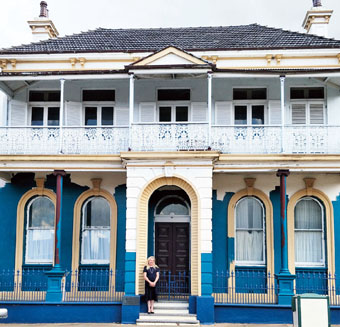By Rozzi Smith
Today’s retail seems to be a celebration of shopping centres and malls of hideous sizes, shapes, colour, inward looking, with bright colours, lighting and music to suit happiness, fun, events … all to make us feel like we are in another body, another place in time … and able to forget our worries, woes, credit card and bank balances … to buy, buy … and buy!
Try looking for a clock … or to look at the outside weather … “Forget all about that” say the marketing signs. “Be a happy, chappy (or girly) and buy something beautiful, sit and eat, drink coffee by the gallons … forget the world outside.”
It works and must work … these massive centres are built on huge $$ investments, shareholder demands, and mainly the ‘biggys’ of the retail world – supermarkets chains, food chains, retail chains, franchises etc.
It’s different in Molong where the town, retailers, shoppers, business owners have been stumbling along for decades (since the late 1960’s/70’s) when the last department store in town i.e. Western Stores, closed its doors.
Molong’s small retailers/cafes and businesses of today are exactly that … small. If we were located closer to the major shopping centres and malls of Orange, Dubbo, Parkes … our smaller retailers and cafes might well have died a slow death by now. Well, in fact, with the closure of the Western Stores, and before that, many of the old time individual traders – there may be lesser activity today in Bank Street.
It’s called the retail cycle – of coming and going. Customers today want to shop somewhere where there is a point of difference – selling ‘points of difference’. It’s a tough game with many business operators home ownership papers sitting in banker’s filing cabinets.
So, what is Molong’s Bank Street ‘point of difference’? For shoppers, locals and Tourists.
Our buildings and streetscape? Molong could maybe claim a ‘point of difference’ by becoming more beautiful – less uniform in style, colour, and streetscape.
Like our front page article suggested last week – we have buildings in Bank Street which relate to the pride of business builders from the day Molong was settled starting back in the 1850’s.
This week, we show another of Bank Street’s buildings which declares “Actually, I’m a little bit Greek” (It used to be a typical iconic Aussie “Greek Cafe”) There’s been issues with refurbishment of this building also. Where did the ‘yellow tiles’ go? “Heritage” some declared. “Return the heritage”. Others said “The new tiles look great”. Interestingly, most of the latter group represent shoppers – whose ‘needs’ of Bank Street are critical if current retailers are to survive.”
Steady! The ‘heritage’ tiles are still there – still standing and lying under a special wrap which represents a modern retail look of today – one which markets the new tenants business in a modern way. The ‘heritage’ tiles now preserved under the covering might well emerge again in the future to suit a new style of business.
However, there’s been trouble – which continues to be experienced in Bank Street. Complaints to Cabonne Council – heritage concerns about the covering of the tiles. But were they of ‘heritage’ value?
Question is – There is mix of architectural styles up and down Bank Street. Italianate, Spanish, Victorian, 1920’s – 1960’s retro reflecting more American than Australian – Question is – what is the Australian Rural style of shopping centre? And, why does Molong have to be stuck with an uninspiring style which seems to be pushed onto our individual marketing genius and what is right for our today, products and services.
Maybe it is time to take some huge steps as a town and community to save what we have – and build on for the future. We (Cabonne Council, heritage, community, business owners, shoppers) can’t keep burying our heads in the sand – and fail, yet again, to work together to figure out Molong’s main street buildings. Challenges linked with current external and internal marketing and business challenges – customer needs and demands – and appropriate respect to often rigid rules of heritage and planning regimes need to be faced. This can’t ignore the building owners and retailers themselves.






Be the first to comment on "Challenges posed by the “heritage” debate"